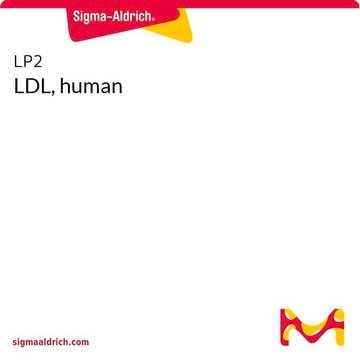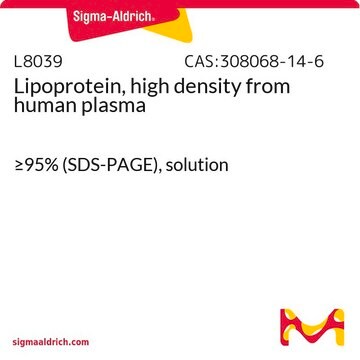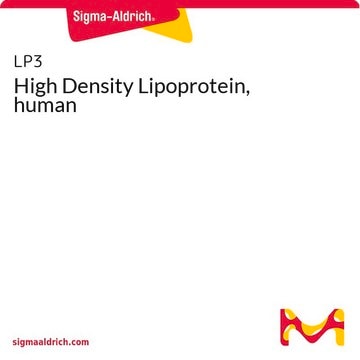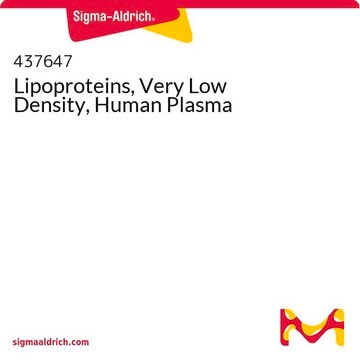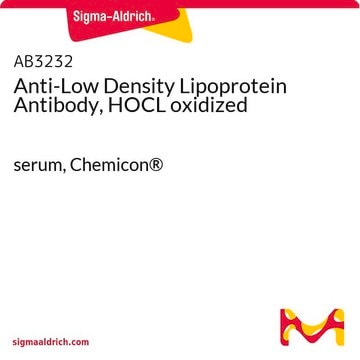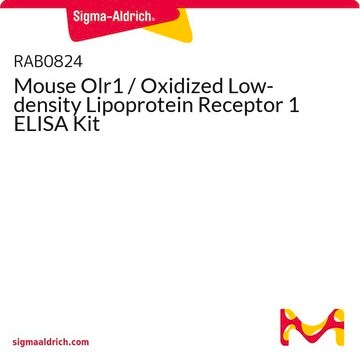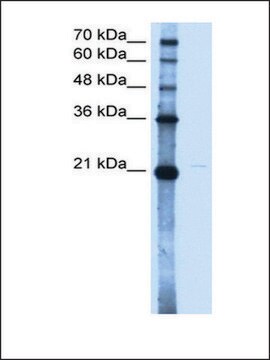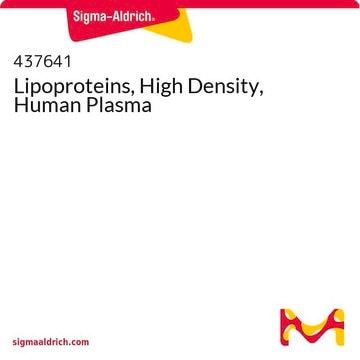L7914
Lipoprotein, low density from human plasma
≥95% (SDS-PAGE), solution
Synonyme(s) :
β-Lipoprotein, LDL, Low density lipoprotein
About This Item
Produits recommandés
Source biologique
human plasma
Niveau de qualité
Pureté
≥95% (SDS-PAGE)
Forme
solution
Groupe fonctionnel
ester
phospholipid
Conditions d'expédition
wet ice
Température de stockage
2-8°C
Informations sur le gène
human ... APOB(338) , APOC2(344) , APOE(348)
Vous recherchez des produits similaires ? Visite Guide de comparaison des produits
Application
- as an additive in cholesterol-free RPMI media
- as a component in buffer to perform an assay for measuring lipid peroxidation
- to stimulate hepatic macrophages
- as a plasma protein to determine pazopanib unbound fraction (fu%) by equilibrium dialysis
Actions biochimiques/physiologiques
Attention
Propriétés physiques
Forme physique
Autres remarques
Clause de non-responsabilité
Code de la classe de stockage
10 - Combustible liquids
Classe de danger pour l'eau (WGK)
WGK 3
Point d'éclair (°F)
Not applicable
Point d'éclair (°C)
Not applicable
Certificats d'analyse (COA)
Recherchez un Certificats d'analyse (COA) en saisissant le numéro de lot du produit. Les numéros de lot figurent sur l'étiquette du produit après les mots "Lot" ou "Batch".
Déjà en possession de ce produit ?
Retrouvez la documentation relative aux produits que vous avez récemment achetés dans la Bibliothèque de documents.
Les clients ont également consulté
Articles
Lipoproteins package cholesterol for transport in plasma, essential for lipid transport and cellular function in the body.
Notre équipe de scientifiques dispose d'une expérience dans tous les secteurs de la recherche, notamment en sciences de la vie, science des matériaux, synthèse chimique, chromatographie, analyse et dans de nombreux autres domaines..
Contacter notre Service technique

